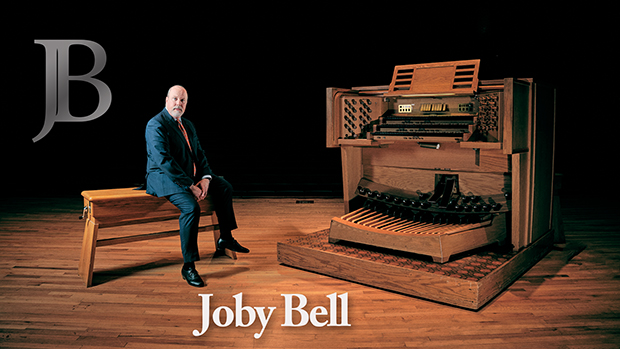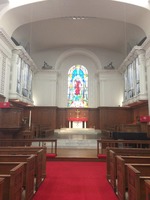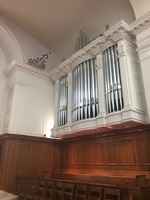No more pencils, no more books
 Thursday, June 14, 2018 at 11:14AM
Thursday, June 14, 2018 at 11:14AM ... No more producer’s dirty looks.
The crew and I have just recorded the final sessions of the complete Widor project. We could not be more pleased (and I could not be more relieved).
Our final works were Symphonies IV and VII and the Bach’s Memento, recorded May 21-24 on the former Kennedy Center Aeolian-Skinner, Op. 1472, now lovingly housed in Providence United Methodist Church, Charlotte. Adam Ward and Andrew Pester were our most agreeable hosts, thereby completing our perfect batting average for gracious hosts and venues for the series. Apparently, the way to discover the best of organists serving organists is to record Widor Symphonies on Aeolian-Skinners. Thank you, Adam and Andrew, for everything. Andrew was also a willing note-holder while I bashed (is that the right word?) a few notes into tune and back into speech. And Adam served as page turner a couple times. In addition, choir members Anne and Nancy were willing page turners for the project. They were fascinated by how this kind of thing works, and I suppose one would be – it’s not every day you get to watch organ recordings being made.
The building is of traditional Georgian architecture, with a wide-open nave opening into equally wide-open transepts. The organ is necessarily powerful in the chancel but nicely homogenized out in the room. There is plenty of foundation, and the mixtures are just right in the room, even if they are necessarily a bit boisterous at the bench. And there are reeds upon reeds to choose from.
This organ’s current incarnation is as a mighty service playing instrument. But as it was throughout our recording adventures, my mind was always churning over historical matters. How did this organ sound in the Kennedy Center? How did that diapason carry in that room? (Probably not very well.) When might they have used this or that stop in orchestral literature? And how did Phil Parkey manage to get this stop straightened out during the rebuild to Providence?
Our batting average was also perfected in matching this rep to this organ. The organ purred and roared appropriately. The Harmonic Flute on the Solo (formerly on the Great) sang like a bird in all the right places. The Vox Humana on its own tremulant served well in the only movement Widor calls for what he called a nanny goat stop. The party horns, a Fanfare Trumpet and a State Trumpet, did not find a place in the rep this time (in contrast to a couple cameos at St. Mark’s in Shreveport for the Sixth Symphony and for the Gothique in Independence, Mo.)
Our biggest challenge this time was traffic noise out on Providence Road, and we were limited in the times of day we could record. We had to take and re-take and re-take. We even resorted to using the playback sequencer for some things, and the boys sent me to rest while they played back the sequencer during relatively quieter times of the day. Producer Keith Weber, aviation nut that he is, used the term “noise abatement” throughout the project. We recorded loud movements during rush hour and quiet movements just before and after lunch hours. We roll with the punches.
Engineers Ryan Edwards and Shannon Smith have been tireless in their pursuit of all things excellent, and it has been a pleasure to work with them. I have no further recording projects in mind, but all it takes is an idea, some cash, and a phone call to Keith Weber, and we’re on. Meanwhile, it’s on to edit and master all these Widor recordings, and they’ll be out on Centaur when the time comes.
Now, I get to go back to memorizing and performing. Excuse me, please.
 Joby Bell | tagged
Joby Bell | tagged  Widor recordings
Widor recordings 

